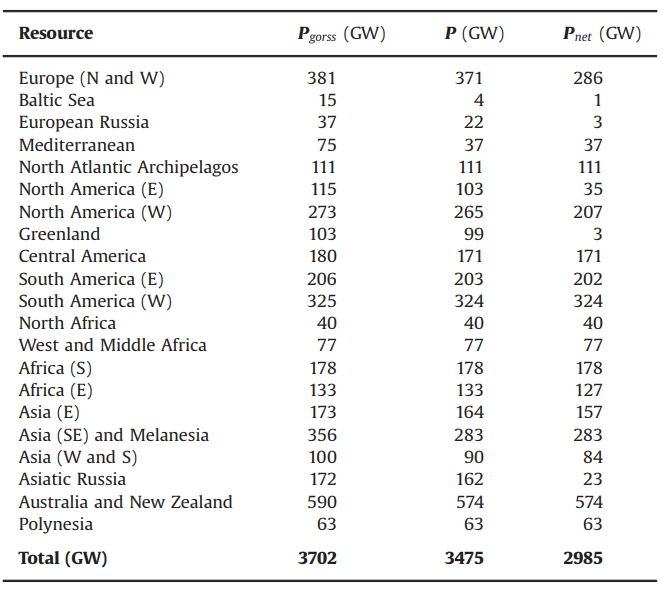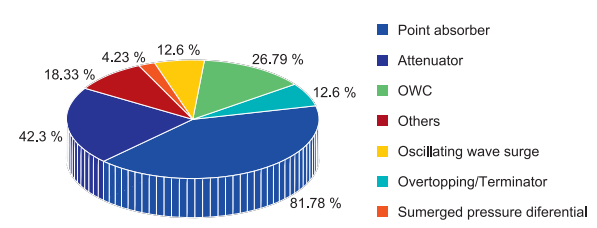Abstract
The paper reports on the history and current development of one of the prominent renewable energy technologies. One of them is a wave energy generator called CETO developed in 1999 by Carnegie Wave Energy. CETO technology captures the swell of the ocean waves using 11-meter buoys located 20-25 meters below the ocean’s surface. The current version of the technology CETO 5 is capable of producing 5 percent of Garden Island’s electricity. Another application of this technology is creating freshwater from ocean water. The process that is known as osmosis utilizes water pressure generated by CETO pumps and through a membrane separates salt ions from clean water. Carnegie center also plans on establishing new, more powerful wave energy farms that are capable of producing 25 Mw of power at the cost of 30-40 cents, and, consequently, lower the price to 12-15 cents (Looks Swell, 2015).
Keywords: wave energy, renewable energy, technology, osmosis.
Discussion
Small countries that lack a large pool of natural resources nowadays have to import fuel from their neighbors at a higher price. For small European nations such as Denmark, Sweden, Britain, and other countries, it is paramount to achieve economic stability through energy independence. A relatively new technology that keeps developing could become a solution for some of them. The above-mentioned countries have access to the sea, which provides them with an opportunity to yield benefits from wave energy.
However, according to López, Andreu, Ceballos, de Alegría, and Kortabarria (2013), the resource of wave energy is also distributed unevenly. Thus, the highest activity level is reported to be within the 40 and 60 latitudes. In the Northern Atlantic, the potential for wave energy is humble, as the wave activity is low (Table 1). The Italian research also confirmed that data (Liberti, Carillo, & Sannino, 2013).
Table 1: Wave power resource

Apart from CETO technology, there are other solutions. Chen et al. (2015), suggest a nano-technological way. As such, a network of triboelectric nanogenerators (TENG) with four units sized 5-10 cm spread across 1 square kilometer of the water surface is capable of producing 1 Mw of power. Above that, many other solutions are present such as water-flux, pressure differential, floating structure such as TENG, overtopping, and surge impact (López et al., 2013).
As for the construction decision and the way of harnessing the wave power, a variety of solutions has been proposed. An attenuator, for instance, is composed of cylindrical sections connected together into a snake-like construction that follows the wave and rotates the generators inside. Point absorbers are smaller and significantly less costly. They utilize the movement of the wave from all directions. Other types include terminators, oscillators, OWC, etc. The most widely spread and developed type is point absorber (fig. 1).

As for desalinization, the technology seems to be in high demand. According to Porada, Zhao, Van Der Wal, Presser, & Biesheuvel (2013), one out of seven people on earth still does not possess access to clean water. Cheap and reliable desalinization technology such as one described in the Economist article could be a solution for developing countries of Africa, where freshwater is scarce. Apart from osmosis, electrodialysis is utilized to produce it. The cost of the lifecycle of electrodialysis is reported to be less than in reverse osmosis, which again brings it closer to being used in low-funding conditions.
Conclusion
The article raises awareness of the paramount problem of energy sustainability. It provides a solution that is already in use. However, it can doubtfully be used in other regions so other ways of receiving energy need to be developed
References
Chen, J., Yang, J., Li, Z., Fan, X., Zi, Y., Jing, Q.,… Wang, Z. L. (2015). Networks of triboelectric nanogenerators for harvesting water wave energy: A potential approach toward blue energy. ACS Nano, 9(3), 3324-3331.
Liberti, L., Carillo, A., & Sannino, G. (2013). Wave energy resource assessment in the Mediterranean, the Italian perspective. Renewable Energy, 50, 938-949.
Looks swell. (2015). The Economist. Web.
López, I., Andreu, J., Ceballos, S., de Alegría, I. M., & Kortabarria, I. (2013). Review of wave energy technologies and the necessary power-equipment. Renewable and Sustainable Energy Reviews, 27, 413-434.
Mork, G., Barstow, S., Kabuth, A., & Pontes, M. T. (2010). Assessing the global wave energy potential. In ASME 2010 29th International conference on ocean, offshore and arctic engineering (pp. 447-454). American Society of Mechanical Engineers, New York, NY.
Porada, S., Zhao, R., Van Der Wal, A., Presser, V., & Biesheuvel, P. M. (2013). Review on the science and technology of water desalination by capacitive deionization. Progress in Materials Science, 58(8), 1388-1442.